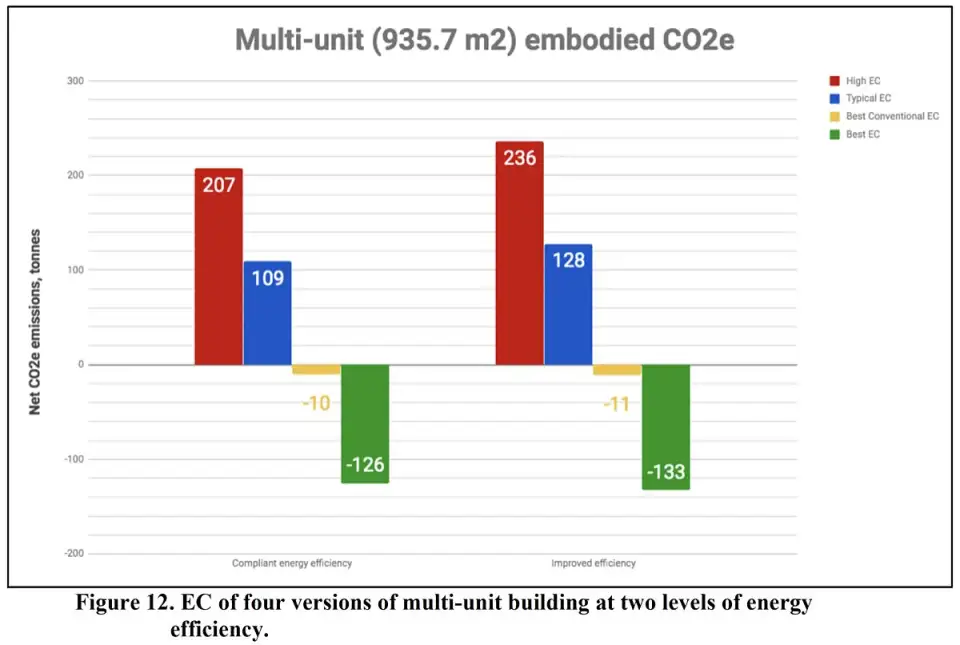
Chris Magwood, director of the Endeavour Centre Sustainable Building School, just released his graduate thesis, “Opportunities for Carbon Dioxide Removal and Storage in Building Materials.” His findings suggest that readily-available building materials—primarily natural ones—can bring the embodied carbon of buildings down toward zero cost-effectively. He also finds that by using more unconventional carbon-sequestering materials, buildings can actually become carbon sinks.
Magwood makes the point, backed by his study’s data, that if we ignore the embodied carbon in the materials that we specify in our buildings, the belch of upfront carbon emissions from those materials could overshadow for decades the lower operational carbon emissions from our best-laid energy efficiency plans.
Moreover, his findings suggest that high performance buildings that use either high or typical embodied carbon materials cause significantly more upfront embodied carbon emissions than code-built buildings built with the same class of materials. In other words, if we make “bad” embodied carbon decisions with our high performance buildings—including Passive House buildings—we amplify the upfront belch of emissions caused by those bad decisions.
But Magwood’s data shows that the reverse is also true. If we make “good” embodied carbon decisions—things like cellulose insulation in walls and attics, wood fiberboard insulation on the exterior, and concrete mixes with lots of supplementary cementitious material—those decisions are also amplified in high performance buildings. High performance buildings that use low-embodied carbon materials emit less upfront embodied carbon than code-built buildings built with the same class of materials.
One driver of this two-way amplification effect is insulation. Because high performance buildings use more insulation than conventional buildings do, high embodied carbon insulation causes more embodied carbon problems in high performance buildings than in conventional buildings. Conversely, carbon-sequestering insulation sequesters more carbon in high performance buildings than it does in conventional buildings.
Food for thought the next time you’re specifying materials and thinking about the climate impact of your Passive House building.

While I’ve shared the potential Passive House implications of Magwood’s findings here, his paper covers lots more ground and is well-worth a close read. Access the full paper here, including study rationale, assumptions, calcs, and data.